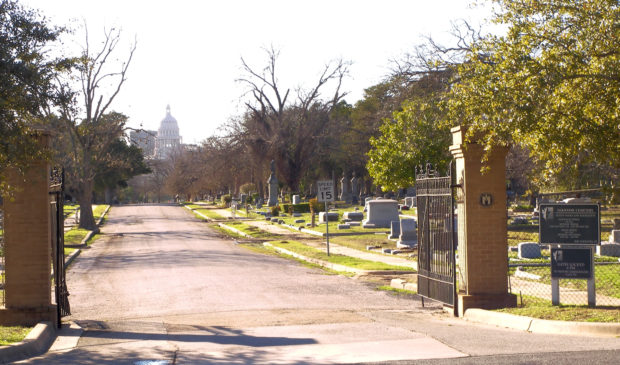Which historic sites should be covered by hotel occupancy taxes?
Thursday, March 22, 2018 by
Jack Craver Last year, City Council voted to reallocate millions of dollars from the Austin Convention Center and Visit Austin (formerly the Austin Convention and Visitors Bureau) to historic preservation efforts. Now, it’s up to Council to decide what projects will benefit from those newly available funds.
The money all comes from the 9 percent tax that the city levies on hotel guests. State law strictly limits the spending of Hotel Occupancy Tax revenue to projects and programs aimed at boosting the local tourism economy.
At a Tuesday Council work session, city staff presented $5.5 million of projects that it said were eligible for the newly available HOT funds. Council members voiced a number of concerns and objections to the list.
The list of the 17 projects and programs includes $750,000 for restoring the O. Henry Museum and $475,000 for the restoration of fencing at the Oakwood Cemetery.
Council Member Ora Houston was disappointed to see $321,000 proposed for the Transportation Department to boost “wayfinding” downtown. Wayfinding is a program run by the city’s Economic Development Department that puts in place “signage, brochures, kiosks and smart-phone applications” aimed at helping residents and tourists get to notable places around downtown.
Transportation Director Robert Spillar said that because the program was partially geared at helping tourists find Austin landmarks, it was eligible for HOT funds. With the new funding, he said, the department could expand the program into the Rainey Street district and parts of Central East Austin. His department would use the money to install signs on parking garages to help tourists identify parking spaces as well as digital signs on roads.
Houston remained skeptical: “Historically, when Transportation gets a bucket of money, it’s spent downtown.”
The list also includes $227,000 for the Planning Department to conduct a citywide “scan” for buildings that might be worthy of becoming historic sites and thereby be eligible for HOT funds for preservation and maintenance efforts. An additional $477,000 is proposed for a detailed survey of historic sites in North Central Austin.
The citywide scan would focus on all buildings that are at least 45 years old and are within a quarter mile of a site that Visit Austin has designated as a tourist attraction. Forty-three percent of the city’s area falls into that category. North Central Austin got additional focus, explained Planning Director Greg Guernsey, because it was close to a number of tourist destinations.
Council Member Ann Kitchen, who represents parts of South Austin, said she was concerned that historic buildings in other parts of the city were being overlooked.
“I know there are historic structures outside the central core,” she said. “I’m concerned with the interpretation that we can only use HOT funds in the central core or that we can only study the central core.”
Whether a certain program or project is eligible for HOT funds is determined by how one interprets state law. The hotel industry, which was heavily involved in crafting the statute that governs the funding, has long argued that the purpose of the tax is to support the tourism and hospitality industry and therefore HOT funds can only be spent on city facilities that could reasonably be described as a tourist attraction.
Last year, Council asked staff to identify $2 million from the city’s General Fund that is being spent on operating historic sites, in the hopes that those costs could then be covered with the newly available HOT funds. However, staff reported on Tuesday that departments could only find $500,000 of operating expenses that they believed would be eligible, according to state law, for HOT funding.
Council Member Ellen Troxclair, who last year led the effort with Mayor Pro Tem Kathie Tovo to divert HOT funds from the convention center to historic preservation, encouraged staff to try to find more operational expenses that could be covered so that the city could free up some money in the General Fund to use on other programs or reduce taxes.
Council Member Jimmy Flannigan acknowledged that there likely weren’t any buildings in his suburban district in Northwest Austin that would qualify for historic preservation funds.
“We didn’t exist 40 years ago,” he said, before suggesting that maybe RM 620 could be classified as a “historic highway.”
Photo by Larry D. Moore, CC BY-SA 3.0, Link.
The Austin Monitor’s work is made possible by donations from the community. Though our reporting covers donors from time to time, we are careful to keep business and editorial efforts separate while maintaining transparency. A complete list of donors is available here, and our code of ethics is explained here.
You're a community leader
And we’re honored you look to us for serious, in-depth news. You know a strong community needs local and dedicated watchdog reporting. We’re here for you and that won’t change. Now will you take the powerful next step and support our nonprofit news organization?









